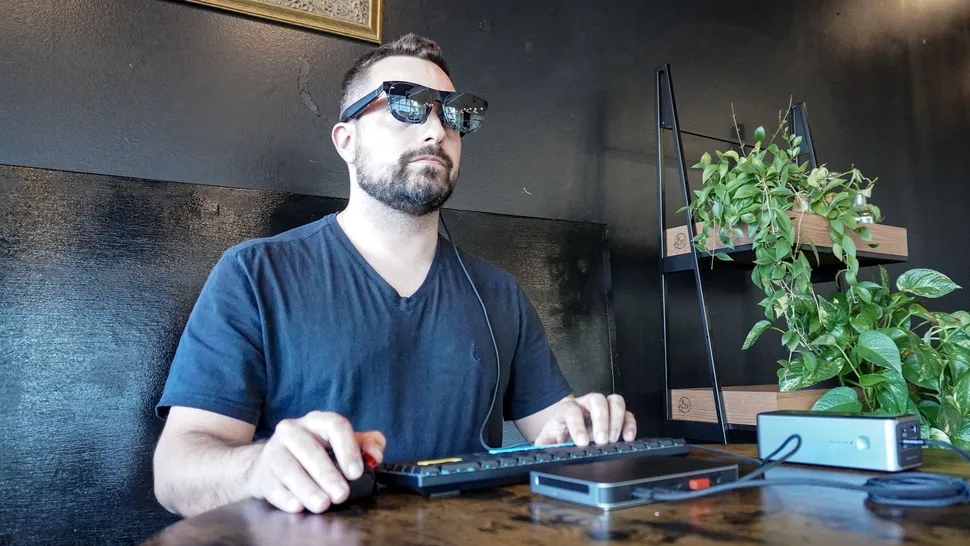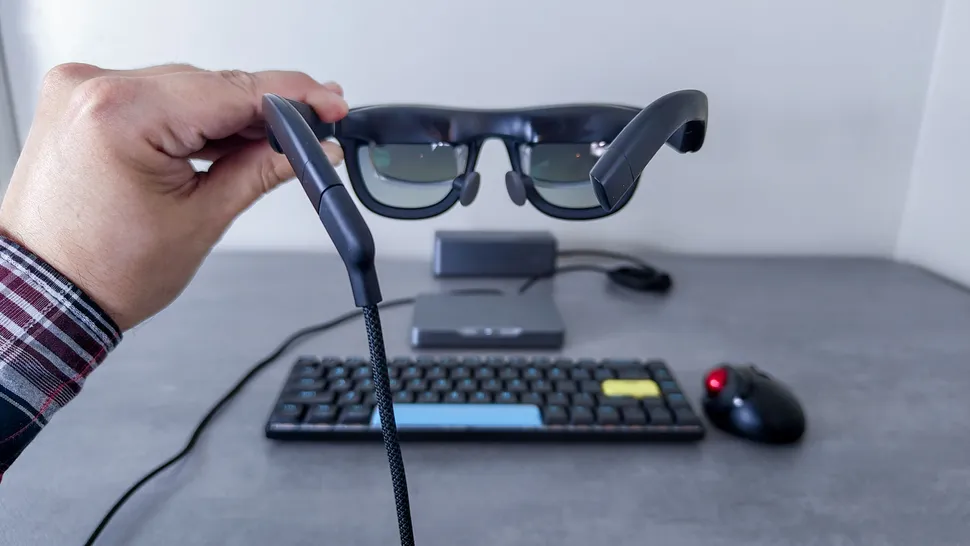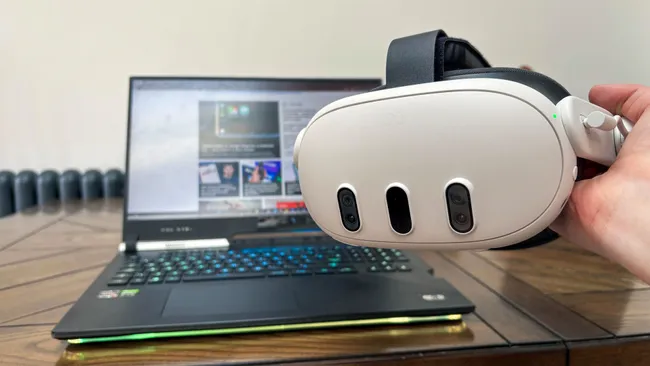Making the most of my Meta Quest 3 has opened my eyes to how far mixed reality (MR) has come — offering features that go well beyond punching, shooting, or dancing through the best VR games.
With its MR capabilities, I’ve been able to stream Netflix while cooking, redesign my room using the Layout app to visualize furniture and measurements, and even learn to draw using the Pencil app. Each of these experiences worked surprisingly smoothly — and made me wonder: could this VR headset actually replace a work setup?
Turning the Meta Quest 3 into a Workstation
We’ve seen attempts before. Meta pitched the Quest Pro as a productivity tool, and Apple Vision Pro followed a similar path — both with mixed success (and not just because of the price).
But now, Microsoft’s Mixed Reality Link for the Meta Quest 3 and Quest 3S changes the game. It makes using your headset as an extension of your PC more accessible, affordable, and practical than ever before.
A Virtual Multi-Monitor Setup That Actually Works
One of the standout features is the ability to create up to three virtual monitors in mixed reality. You can resize, reposition, and organize them however you like — stacked vertically, side-by-side, or even ultra-wide. It’s like having a customizable, multi-screen setup without crowding your desk.
After linking my Meta Quest 3 to my Windows 11 PC, I’ve been running a three-monitor virtual setup with ease. The Mixed Reality Link feature works well, though not perfectly — video calls still struggle, and audio occasionally drops out.
Even so, being able to arrange virtual screens anywhere in your view makes this one of the most flexible and futuristic workspace setups available. You can control everything easily with hand tracking or the Touch Plus controllers, moving and resizing screens in seconds.
How It Compares to a Traditional Setup
Normally, I rely on a 32-inch 4K monitor for my daily work. But with the Meta Quest 3, I can browse websites, watch YouTube or Netflix, and even jump into games like Doom: The Dark Ages on Xbox Game Pass — all in the same virtual space.
It’s an incredibly immersive experience that’s hard to match, even if it means wearing a VR headset for hours.
The One Big Problem: Passthrough Limitations
Despite all its advantages, there’s still one major drawback that keeps me from fully replacing my monitor setup with the Meta Quest 3 — its video passthrough quality.
While the full-color passthrough allows you to see your real-world surroundings, it’s still not sharp enough for focused, detail-oriented tasks like writing, reading fine text, or handling spreadsheets for long periods.
So while the Meta Quest 3 shines as a mixed reality entertainment and productivity companion, it hasn’t quite reached the point of being a true monitor replacement — at least, not yet.
The main issue
The Biggest Challenge of Working in VR: Typing with the Meta Quest 3
As a writer, my keyboard is easily my most important tool. I need to type quickly, comfortably, and without distractions — but doing that while wearing a Meta Quest 3 VR headset is far from ideal.
The Meta Quest 3 and Quest 3S both feature impressive full-color passthrough, which gives you a fairly clear view of your surroundings while using apps, browsing, or watching shows. However, when it comes to seeing detailed objects like a keyboard, that clarity disappears.
The Problem with Passthrough Clarity
The passthrough view on the Meta Quest 3 is still too grainy for precision tasks. It struggles to accurately display fine details — especially in low-light conditions. While this isn’t a big deal for general actions like reaching for a glass or adjusting your chair, it becomes a real problem when you need to look down at your keyboard to type.
Touch typists might not mind, but for anyone who occasionally glances at the keys to find shortcuts or regain rhythm, the lack of sharpness makes it frustrating. You’ll find yourself typing slower, making more mistakes, and constantly adjusting your headset — all of which break focus and productivity.
Typing in Mixed Reality Just Isn’t There Yet
Every time I try to type while wearing the headset, I end up fighting against awkward angles, blurry visuals, and the occasional typo. It’s simply not as natural or comfortable as typing in the real world.
The passthrough’s lighting sensitivity adds another layer of challenge — if your room isn’t well-lit, you’ll barely see your keyboard at all. In darker environments, the passthrough becomes nearly unusable, turning basic typing into a guessing game.
Bonus Tip: Don’t Drink Coffee in VR
One more lesson learned the hard way — sipping a hot cup of coffee while wearing a VR headset is a terrible idea. Let’s just say my shirt didn’t survive the experiment.
In short, while the Meta Quest 3’s mixed reality features are impressive, typing and productivity tasks still highlight its biggest weakness: the inconsistent passthrough quality. Until that improves, your best bet is to enjoy the Quest 3 for entertainment and immersive experiences — and leave the heavy typing for your desk.
AR glasses have this nailed down

VR vs. AR for Work: Why Lighter Might Be Better
At the end of the day, working in a full VR headset like the Meta Quest 3 still isn’t the most practical solution for productivity. Having a bulky device strapped to your head, combined with a blurry video passthrough, makes long work sessions uncomfortable and less efficient.
That said, I still believe mixed reality and virtual monitor setups represent one of the most innovative ways to work — especially as the technology continues to evolve.
This is where AR (augmented reality) glasses step in. Unlike VR headsets, the best AR glasses today are lighter, more discreet, and designed for everyday use while still offering immersive, high-resolution virtual screens.
For example, the Viture Luma Pro delivers a massive 152-inch virtual display at 1200p resolution, giving users the flexibility of a multi-monitor setup without the bulk of a headset.
Our own Anthony Spadafora even tested this idea by ditching his laptop in favor of a mini PC and AR glasses, and it worked flawlessly for working on the go. Beyond the convenience, using AR glasses can also help reduce tech neck — a common issue for those who spend long hours looking down at laptops or monitors.

However, for me and my fellow typists who prefer to observe their surroundings in depth, AR glasses continue to provide a real-world picture of the environment, making it much easier to peek at my keyboard, pick up cups of coffee, and handle objects.
Although it remains a small market, working in mixed reality environments has several benefits, some of which are cost-effective. I’ll continue to use my Meta Quest 3 with the Mixed Reality Link feature to add an extra set of easily adjustable displays to my Windows PC, but I’ll use it more for play than for work.


